ASTM is an international standards organization that is located in the United States of America. The purpose it was introduced to the industry is to publish technical standard agreements for various materials, product, systems and others. Among the ASTM standards that are often use in the industry is ASTM D6252 Test Standard.
ASTM D6252 Test Standard
Description For ASTM D6252
ASTM D6252 is an international test standard describes a position-controlled 90˚ peel test method to quantify the adherence of a pressure-sensitive label stock to a standard steel substrate, or other surfaces, for quality assurance purposes. This test method enables manufacturers to evaluate the bond strength of pressure-sensitive label stocks for a variety of different applications. This measurement is critical as poor label adhesion may result in torn or completely remove labels, which can prohibit product identification or hamper packaging appearance.
Specimen For ASTM D6252
The specimen must be die-cut according to specifications as found in the standards. To cut the shape of the specimen, ideally using a die cutter and The shape of the specimen is designed to create tension when the specimen is pull.
1. Dumbbell or dogbone cutter
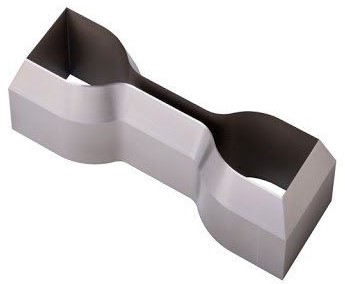
- Dogbone specimens must be die cut using special equipment known as dumbbell cutters. The dumbbell cutters need to be calibrated using a VMS machine so that the size is more accurate.
Grips For ASTM D6252
Manual vise grips are general purpose versatile grips for capacities of 50kN or less. Plastic, metal, fabrics, films, ceramics, and many other types of samples can be held in a vise grip.
- Mechanical vise grips
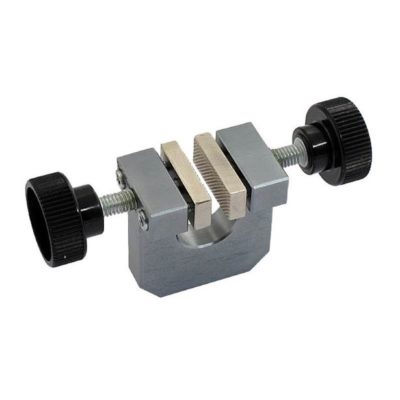
Screw action, or manual mechanical vice style grips provide a simple and effective way of gripping test specimens. They are successful and affordable and serve a wide range of applications. The grips feature interchangeable dual-acting jaw faces that can be adjusted to handle different specimen thicknesses.
2. 90 degree peel fixture
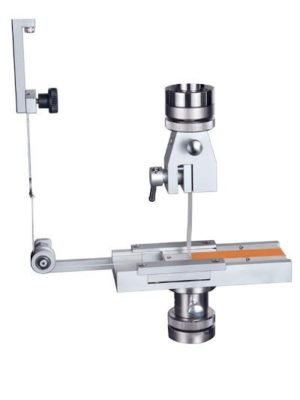
To measure the adhesion strength, the sliding table provides a steady movement to maintain a constant peel angle. The peel point remains in the centre
Type of UTM machine
We recommend using UTM machines with a capacity of 2kN-20kN. it depends on the strength of the plastic or film. We also recommend using smaller machines such as dual-column types
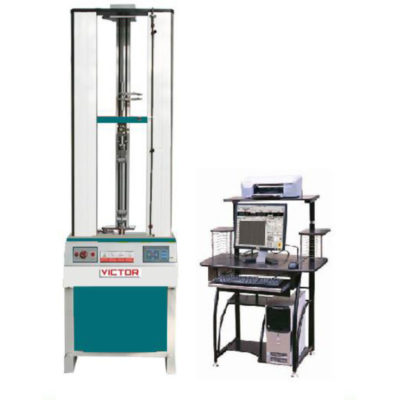
VEW 2307 Desktop microcomputer-type tensile testing machine is designed by our company which is made of aluminium, it is not only small, used widely, do not take up space, nice appearance, but also easy to move with the hoop, it is very convenient to operate.
It is controlled by computer and printing out the testing report; the outward appearance used the closing board dealing with high-level baking varnish, which obviously elegant
It especially suitable for controlling quality in the production line, this series of machine is mainly applied to test the non-metallic and metallic materials which the load is less than 2KN
2. VEW 2308
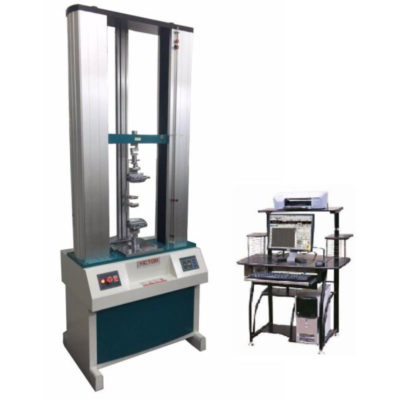
The machine is designed by mechanical-electrical integration, the composition of the force-measuring Sensor, transmitter, microprocessor, mechanism of load drive, computer and color inkjet printer. The high-precision electronic motor can be set to five-speed, the components are connected by plug-way, Floor-standing models, it is taken account of modern industrial design and ergonomics in modelling and Coating. It can be tested with all the materials in the stretch, compression, bending, shear, embedded relay, Peeling. tearing, crack, etc, such as rubber, plastics, leather, metal, nylon wire, fabric, paper, aerospace, packaging, construction, petrochemical, electrical, vehicle, etc.
The implementation of standards and standard configuration:
GB/T4689.20-1996 Measuring fastness of leather’s adhesion
QB/T2710-2005 Measuring leather’s expansion and the rate of elongation
QB/T2711-2005 measuring tear force of leather
QB/T2712-2005 measuring leather’s strength and stretch of spherical crack test
Test Procedure For ASTM D6252
- Select the appropriate equipment to perform the testing procedure.
- Make sure the regents and materials to clean and dry the test panel comply with the standard’s guidelines.
- Prepare and condition the adhesive specimens in accordance with ASTM D6252.
- Use a specimen cutter and sample roller to create specimens sized per the standard.
- Place the adhesive specimen onto the test plate or test panel fixture of an adhesion testing setup.
- Secure the free end of the adhesive specimen into the upper grip of the tester and tighten the grip.
- Operate the adhesion tester at the separation speed outlined in the standard so that the sample is peeled off the test plate at a 90 degree angle.
- Measure the force applied to obtain peeling.
Measurements
- Peel Adhesion Strength
